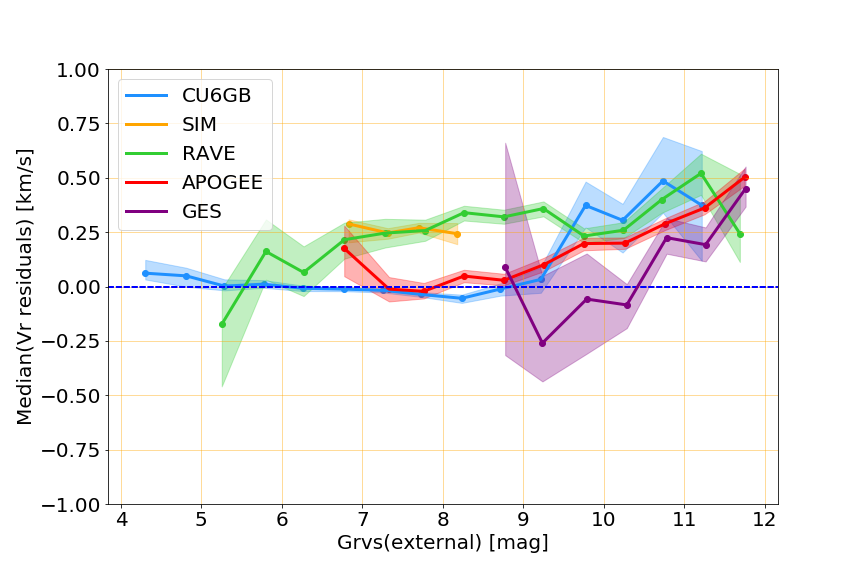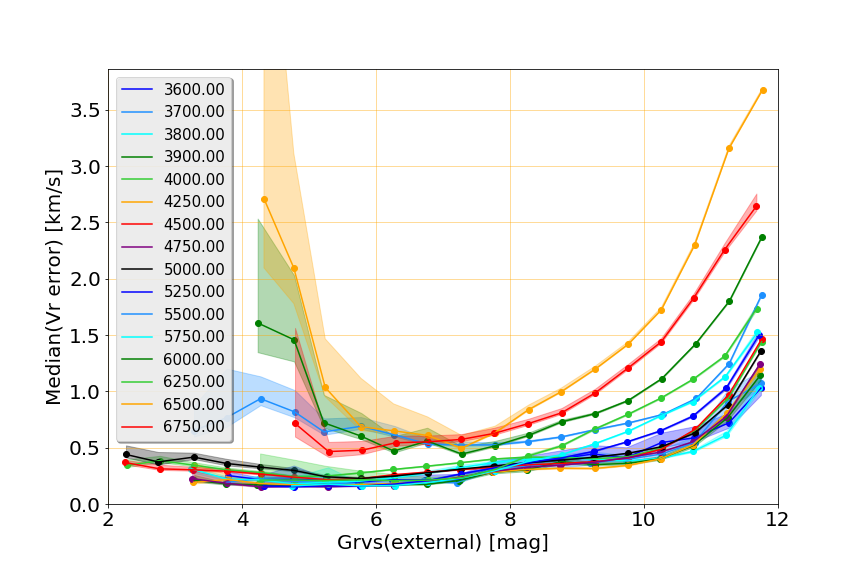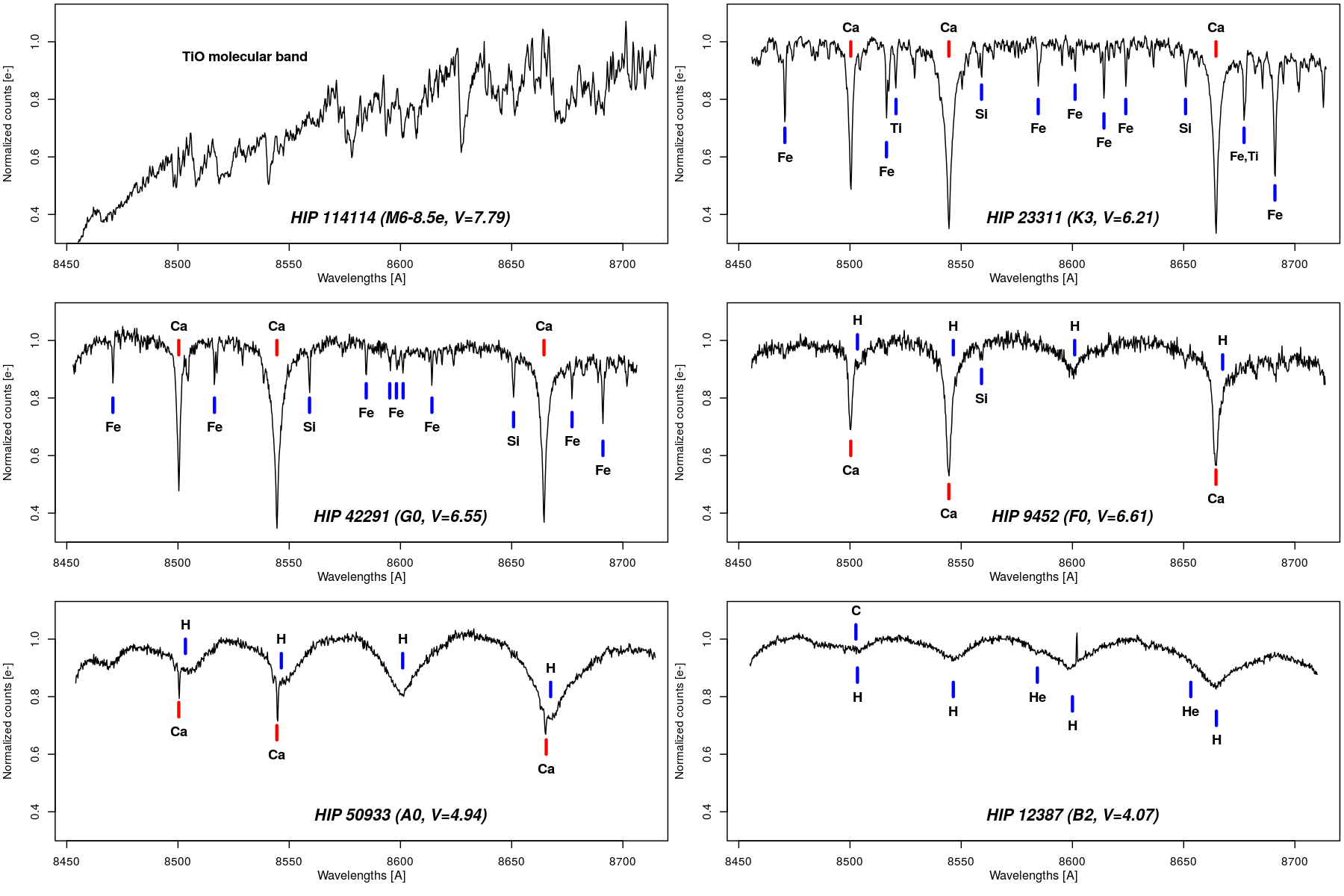6.5.2 Validation
When the Gaia DR2 processing was finished, the CU6 carried out a validation campaign off-line on all pipeline results in order to assess the properties of the entire dataset and to identify the bad quality data to exclude from the Gaia DR2 publications (Katz et al. 2019). The spectroscopic pipeline produced the median radial velocity of 9 816 603 stars from which 2 344 881 have been excluded due to bad quality identified after the internal validation. The radial velocities of the stars with the following properties have been excluded. The approximate percentage of the sources removed by each criterion is also indicated. Some of the sources satisfy more than one criterion, and the percentage depends on the order the filtering criteria are applied:
-
•
outside the limit STA range ]-1000; 1000[ km s(only 70 stars satisfy this criterion);
-
•
coordinate uncertainties larger than 100 mas: i.e. 100 mas ( 0.3 %);
-
•
flagged as ambiguous in all transits by STA ( 20.5 %);
-
•
large radial velocity uncertainty (radial_velocity_error) km s( 49.4 %);
-
•
‘hot’ stars having the associated template rv_template_teff 7000 K ( 19 %);
-
•
‘cool’ stars with rv_template_teff 3500 K ( 5.5 %);
-
•
detected emission lines (templates for emission-line stars are not available and the estimation cannot be done properly) ( 0.2 %);
-
•
too faint flux measured in the window: internal ( 0.08 %);
-
•
suspected binaries detected as double-lined in 10 % of the transits ( 2.3 %);
-
•
397 stars with 500 km s(the spectra of the 627 stars found to have 500 km s, after the above filters had been applied, have been visually inspected and the radial velocities obtained with damaged spectra have been excluded).
Some other data have been excluded by the Gaia DR2 validation campaign carried out by the CU9 (Arenou et al. 2018). In particular, some stars have been excluded because they have been found to be the duplication of other stars. In Gaia EDR3 additional 14 800 radial velocities are excluded (Section 6.1.1) and in total there are 7 209 832 stars with a radial velocity. The radial velocity uncertainties (dr2_radial_velocity_error) are 20 km s(the median value is km s). The of the associated templates is in the range: rv_template_teff K.
The accuracy of the measurements has been estimated by comparison with the external catalogues (Table 6.3) even if also the external catalogues can be affected by systematic zero-point shifts. Figure 6.8 shows the median radial velocity residuals () as a function of the external . The RVS of the bright stars do not exhibit a significant offset with the APOGEE and the CU6GB , but they show an offset with SIM and RAVE. For stars fainter than , the RVS exhibit an offset increasing with magnitude with the other catalogues, and reaching approximately 500 m s at the faint end. The reason for this is not yet understood but may be attributed, at least in part, to Charge Transfer Inefficiency due to radiation damage. The pre-launch end-of-mission requirement on the systematic uncertainty was m s (Cropper et al. 2018), and the 500 m s shift for the stars at the faint end is acceptable for this first data release.

Figure 6.9 presents the Gaia DR2 precision as a function of the external magnitude and of effective temperature of the templates associated to the stars, rv_template_teff (the different curves). In general the radial velocity precision improves as the effective temperature decreases. This is the direct consequence of the morphology of the spectra depending on the temperature (see Figure 6.10). However some nearby curves show the opposite behaviour: the stars processed with = 6750 K templates (red curve) have better precision than those processed with = 6500 K templates (orange curve). The reason is that temperatures of 6500 K are associated to the star by the module DetermineAP (Section 6.4.4) and are more affected by template mismatch than the stars with = 6750 K which comes from the ground-based parameters (Section 6.2.3). The pre-launch end-of-mission requirement on the precision was km sfor the G2V stars with (Cropper et al. 2018). The radial velocities obtained for in this first data release are already exceeding the end-of-mission requirement.

